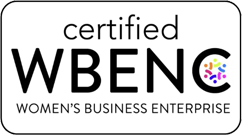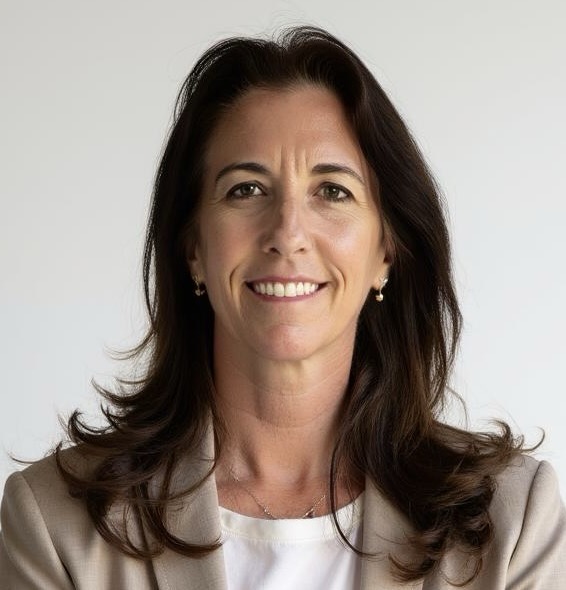This blog was written by Ashton Ferguson, UCSD 4th year undergrad student, as part of his internship program.
As a patient with Cystic Fibrosis, my life is encompassed by medical research, whether it be for a new miracle drug or information about the spread of a harmful virus. My body is more vulnerable to viral diseases such as COVID-19 or the flu, both of which could put me in the hospital if I am not careful. Publicly available medical research allows me to stay informed of things that are potentially harmful to me, but it also allows me to make decisions for the betterment of my health. For example, I have diabetes that stems from Cystic Fibrosis, so my doctors and I use public medical research to look for a new version of insulin that could better suit my needs. That is what makes medical research and the way it is circulated important not just to me, but to nearly everybody. The average person has medical research to thank if they have ever seen a doctor or looked a symptom up online. However, this type of research is often thankless and overlooked by the general public. Because of this, the circulation of medical research isn’t nearly as robust as it could be.
The Importance of Transparent and Accessible Communication in Conveying Research Findings
Medical research in service of the public is made up of three main components. The scientists doing the research, the public who this research is in service of, and the research itself. These three components have to work hand in hand if something productive is to come out of it. If the research was poorly documented, how can the public trust it? If the researchers are uncomfortable with relaying their findings to the public, then who will? Will average people understand the importance of questioning research findings? These questions are important to ask because a great amount of medical research results in the answer universally being “no”. The relationship between the research, the researcher, and the public is an unstable one, but why is that and how can that be changed?
The most important aspect of spreading medical research findings is how accessible the findings are to the public. Accessibility can mean more than one thing. Something being accessible can allude to it being easy to obtain or easy to understand. What’s important is that medical research findings need to be both easily understood and obtainable to be successful. For instance, maybe research findings were freely given out to a popular website that just about anyone can access, but the research itself is so hard to follow that people either get a skewed vision of what the results are, or they don’t even bother to try to understand what is presented. This can have a dangerous snowballing effect where people might spread incorrect information or completely lose faith in the scientific community since they are being ostracized by a language barrier. On the other hand, maybe the research findings are easy to understand, but nobody outside of the research institution is given access to it. Instead, the research is explained away by one person, but nobody will ever see the data that backs up that explanation. This can result in people not trusting what they are being told. People may also overly trust what they are told and disregard a lack of evidence out of desperation for answers. In any way we look at it, research being inaccessible or opaque can be potentially harmful, and it can devalue medical research that may come in the future. This is what makes fully accessible research so important because the alternative can do more harm than good.
The Dated Nature of Health Communication
While it may be easy to point all of the blame for these accessibility issues on the researchers, it also isn’t their specialty to translate their findings into something understandable by the public. Maybe it should be, but these people already work incredibly hard to solve important issues, which takes many years of education, experience, and diligence. Medical researchers simply don’t enter their professions with the expectation of translating their complex findings into something everyone can understand. That’s the dilemma, the way researchers are trained is now dated. Now more than ever, the general public depends on medical researchers to tell them what’s what, and too many researchers aren’t trained to do that. This is especially problematic for scientists who are paid by our taxes. Shouldn’t the scientists of our government be able to relay information to the citizens that help pay for them? What’s more, we’ve seen what this incapacity for communication can result in by looking back at the COVID-19 pandemic. If everyone had given a consistent understanding of the rules that were put in place and the basic science behind these rules, there might have been a lot less hysteria and distrust. All of that being said, there is a reason why researchers are not commonly able to present their findings to the average person. People in the STEM field aren’t expected to also have a degree in communications. That’s a lot of additional work that I am sure current researchers would not be giddy about pursuing. However, this type of additional education could be an investment that makes the world much safer. Regardless, a researcher being able to make their findings understandable to the general public should have been an expectation in the first place.
The Power of Knowledge Dissemination
It’s been made clear that a lack of communication between researchers and the general public can very easily spell disaster, but what are the benefits that come with effectively communicating research to the public? For the most part, the pros are just the reverse of the cons. For one, there would be far less distrust and apathy for these research findings because people would be treated as intelligent adults instead of being talked down to through a complex language. There would also be less cause for panic via misinformation because everyone would be receiving a transparent message instead of something they have to solve like a riddle. The public eye would also see more credibility in medical research if it was consistently communicated, creating a positive snowball effect that could popularize the understanding of widespread medical issues.
Now that we are more familiar with how important, yet flawed publicly accessible medical research can be, we should discuss what we can do to make things better. When it comes down to it, our two greatest obstacles are how researchers communicate with the public and how the public processes that information. Researchers play a massive hand in this issue and there aren’t many solutions other than changing how they are trained in the first place. As discussed before, a common suggestion is to require prospecting researchers to be taught how to translate their findings into something easily digestible to the average person. However, suggesting this isn’t good enough. We are here to learn about how we can make things better, so how can we encourage these ideals in a widespread manner? I say we start small. Although we have similar goals, we are not unified so the best we can do is encourage this unification. If we are going to change the medical industry for the better, the first and most crucial step would be changing how we react to new medical research findings and how we educate ourselves. If you want to educate yourself, it’s best to look for guidance from professionals. Asking your doctors or physicians who specialize in a field you are curious about is an easy way to quench your thirst for knowledge. You can also attend conferences or fundraisers that house those who are experts on a certain illness or treatment, or people that live with them. As someone who does all of these things, I have learned a lot about my illnesses, the future of medicine, and how these things are perceived by the rest of the world. If you want to be even more brave, you can look into how to understand these convoluted medical journals, or you can get in touch with someone who already understands them. I have frequently spoken with my doctors about new studies and potential medications and they are happy to fill me in. Often, they are way ahead of me and have answers to questions I never knew to ask. If they haven’t read up on something you are curious about, they will often catch up on their reading or refer you to someone who already has.
Fostering Collaboration and Trust
As an individual, there is more that you can do other than educate yourself. You can push for a change in the medical industry in a multitude of ways. You can network with doctors and patients, speak at conferences, converse with politicians, gather like-minded people and protest, and the list goes on. However, you don’t have to do these big common things to make a difference, maybe all you have to do is write a good book. As an example close to my heart, I will reference the book Breath From Salt by Bjal P. Trivedi, which is about the entire history of Cystic Fibrosis. Even my family is featured in this book. The Cystic Fibrosis Foundation was originally founded in 1955. Before this, two parents, Evelyn and Billy Graub, had a terribly sick child named Lee and they all started with nothing. No money and no connections to parents or doctors that were familiar with CF. Even when the Graub family was able to confirm what Lee’s sickness was, there was no hope for treatment. As word spread across town in Philadelphia, people familiar with the medical industry relayed information to the Graubs about what’s considered to be the first fundraiser for CF. This encouraged the Gaubs to invite locals whose children were sick with CF. This evolved into a gathering where parents brainstormed how they could help their children, eventually deciding to travel to a hotspot in New York where more medical professionals were familiar with CF. This hotspot gathered parents of children with CF whom the Gaub family told they were trying to start an organization that connected all of these people together. Wanting to reach out to more than those in their local area, the Graubs employed a publicist, and as time went by, over a dozen volunteer branches were formed for CF in Philadelphia. None of them were coordinated by goals or rules which encouraged the creation of an all-encompassing foundation that would unify not just everyone in the state, but in the entire country. This is how the Cystic Fibrosis Foundation was born, and although these parents’ children hardly lived to their teens, their accomplishments in the face of hopelessness made it possible for people like me to live a full life. The Cystic Fibrosis Foundation is now a multi-billion-dollar organization and all of that is because of two parents who were desperate to save their child. I tell this story to relay how capable the individual can be at making a difference. You don’t need to look to big organizations to invoke great change. Small things can grow too.
The Big Takeaways
Before writing this article, I never put this much thought into the dissemination of medical research despite how much it has enveloped my life. Hopefully, reading this has done the same for you. Whether it was from learning about the dated nature of medical research dissemination, the consequences of efficiently or inefficiently circulated research, or strategies to help you get the most out of public medical research, I can only hope you gained a change in perspective that will guide you in the future.





